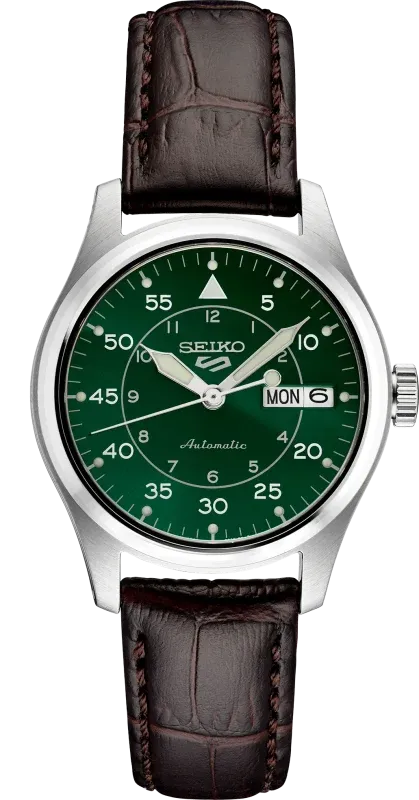Since its founding in 1881, Seiko has been Seiko Watches at the forefront of horological innovation, establishing itself as one of the most respected watchmakers in the world. With a deep-rooted commitment to precision, quality, and pioneering technology, Seiko has built a reputation that seamlessly blends traditional Japanese craftsmanship with forward-thinking design. From its humble beginnings as a small watch shop in Tokyo to its global recognition as a horological powerhouse, Seiko's journey is a remarkable testament to timekeeping excellence.
Origins and Early Growth
Seiko’s story began with a visionary entrepreneur named Kintaro Hattori, who opened a shop selling and repairing clocks in Tokyo. By 1892, he had established the Seikosha factory, where he began producing wall clocks. The company’s name, Seiko, which means “exquisite” or “success” in Japanese, first appeared on a wristwatch in 1924. This marked the beginning of Seiko’s ascent in the world of wristwatches, as it steadily gained recognition for its commitment to quality and reliability.
Innovating the Watch Industry
Seiko’s place in history is forever secured by one of its most groundbreaking contributions: the creation of the world’s first quartz wristwatch, the Seiko Quartz Astron, in 1969. This innovation revolutionized the watch industry, offering unprecedented accuracy and transforming global watchmaking standards. Quartz technology dramatically reduced the Seiko Coutura cost of precise timekeeping and allowed watches to become more accessible to the masses, sparking what became known as the “Quartz Crisis” for traditional mechanical watchmakers in Switzerland.
But Seiko didn’t stop there. In the following decades, it introduced other important advancements, including the Kinetic movement, which combines quartz accuracy with automatic charging, and the Spring Drive, a hybrid mechanism that merges mechanical and electronic watchmaking for exceptional precision.
Iconic Collections
Seiko's vast array of watch collections caters to all types of watch enthusiasts, from casual wearers to seasoned collectors. One of the most well-known lines is Seiko 5, introduced in the 1960s as an affordable and durable automatic watch. The “5” stands for five key features: automatic movement, day-date display, water resistance, a recessed crown at 4 o’clock, and a durable case and bracelet.
Another fan-favorite is the Prospex line, designed for professional sports and adventure, including diving, aviation, and land exploration. These timepieces are built to withstand extreme conditions while maintaining stylish appeal and technical performance.
Presage represents Seiko's more elegant side, showcasing traditional Japanese artistry with enamel, urushi lacquer, and textured dials inspired by nature and culture. This line blends mechanical excellence with refined aesthetics.
At the pinnacle of Seiko's craftsmanship is Grand Seiko, a luxury division that was launched in 1960. These watches embody the height of Japanese precision and artistry, featuring in-house movements, impeccable hand-finishing, and minimalist yet elegant designs that rival Swiss luxury brands.
Commitment to Quality and Sustainability
Seiko's watches are known for their meticulous quality control. Unlike many manufacturers, Seiko produces almost every component in-house, from movements to cases to dials. This vertical integration allows for consistent quality and the ability to innovate across every stage of the watchmaking process.
The company has also committed to sustainable practices, developing solar-powered watches and energy-efficient technologies that reduce environmental impact. This dedication reflects Seiko’s broader philosophy of harmonizing craftsmanship with responsibility to the planet.
A Global Legacy
Seiko’s influence extends far beyond Japan. Its watches are celebrated worldwide for their value, innovation, and craftsmanship. Whether it's the affordability and reliability of entry-level models or the technical mastery and beauty of Grand Seiko, Seiko offers something for everyone. Collectors admire the brand's heritage and limited editions, while everyday consumers appreciate the brand's functionality, style, and reliability.
Seiko timepieces have even made their way into pop culture, with models worn by famous personalities and featured in films. The Seiko 6105, worn by Martin Sheen in Apocalypse Now, and the Seiko Giugiaro Chronograph, worn by Sigourney Weaver in Aliens, have become cult classics among collectors.
Conclusion
Seiko Watches represent more than just instruments for telling time—they are a fusion of history, innovation, and artistry. For over 140 years, Seiko has continued to push the boundaries of horology while staying true to its founding principles. Whether you're a first-time buyer or a seasoned collector, a Seiko watch offers a unique story, reliable performance, and timeless appeal. As trends come and go, Seiko's enduring legacy remains—an icon of precision and elegance in a constantly evolving world.
